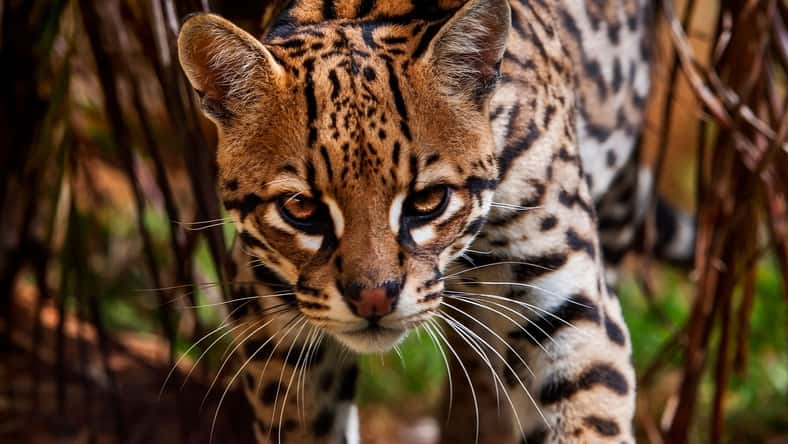A Rare Ocelot Was Spotted In The Atascosa Highlands Of Arizona On A Wildlife Camera For The First Time In 50 Years

For the first time in 50 years, an ocelot was spotted on a wildlife camera in the Atascosa Highlands region of Arizona.
The animal’s markings were examined to confirm it was new to the state. In the past two decades, only seven ocelots, including the most recent one, have been observed in Arizona.
As part of a wildlife monitoring project, researchers at the Phoenix Zoo installed roughly 50 cameras around the Coronado National Forest near the border with Mexico in April.
There, the Atascosa Highlands are made up of three mountain ranges, which have been relatively understudied.
When the researchers hiked up to the site to check on the cameras to make sure they were working properly, they played back some of the footage.
They were surprised to see an ocelot maneuvering its way across the rocky ground before moving out of view of the camera.
“It’s [a] very rare record,” said Kinley Ragan, the field research project manager for the Phoenix Zoo.
“However, more research is needed to further understand the full extent of these populations, and for our record, is this individual passing through? Are they staying year-round? Are there others with it? These are all kinds of questions that we’re really excited to explore.”
Currently, ocelots are listed as an endangered species in the United States. They have held that status since 1972 and make only occasional appearances in Arizona.

Leonardo – stock.adobe.com – illustrative purposes only, not the actual ocelot
The range of the wild cats stretches as far south as Argentina, but their U.S. population is thought to be less than 100 individuals.
Their only known breeding population in the U.S. is located in Texas. They used to occupy Texas, Arkansas, Louisiana, and Arizona until human activity greatly reduced their numbers.
Their decline is mainly due to loss of habitat. Ocelots need grasslands and forests for protection and shelter. They also feed on the small rodents, rabbits, birds, and lizards that inhabit these places.
“They used to historically be here, and so because of changing climates, because of lack of habitat and connectivity, they’re not here anymore,” said Ragan.
“To be able to have this record just gives us more information of how to better protect these ecosystems for species so that we can ensure that they’re here in the future.”
The cat was seen at a lower elevation than usual for ocelots. It is the seventh known ocelot in Arizona, according to a specialist with the Arizona Game and Fish Department.
Since last year, another ocelot has consistently been showing up in Arizona. It was spotted more than 50 miles away from the new ocelot sighting.
Zoo staff and volunteers will gather more camera footage in the coming months. Perhaps more ocelot sightings will be captured. The team also plans to collect water samples to test for the DNA of other animals in the region.
Hopefully, the visual data from the cameras will help research teams figure out the most effective conservation strategies for species like the ocelot.
Sign up for Chip Chick’s newsletter and get stories like this delivered to your inbox.
More About:Animals





